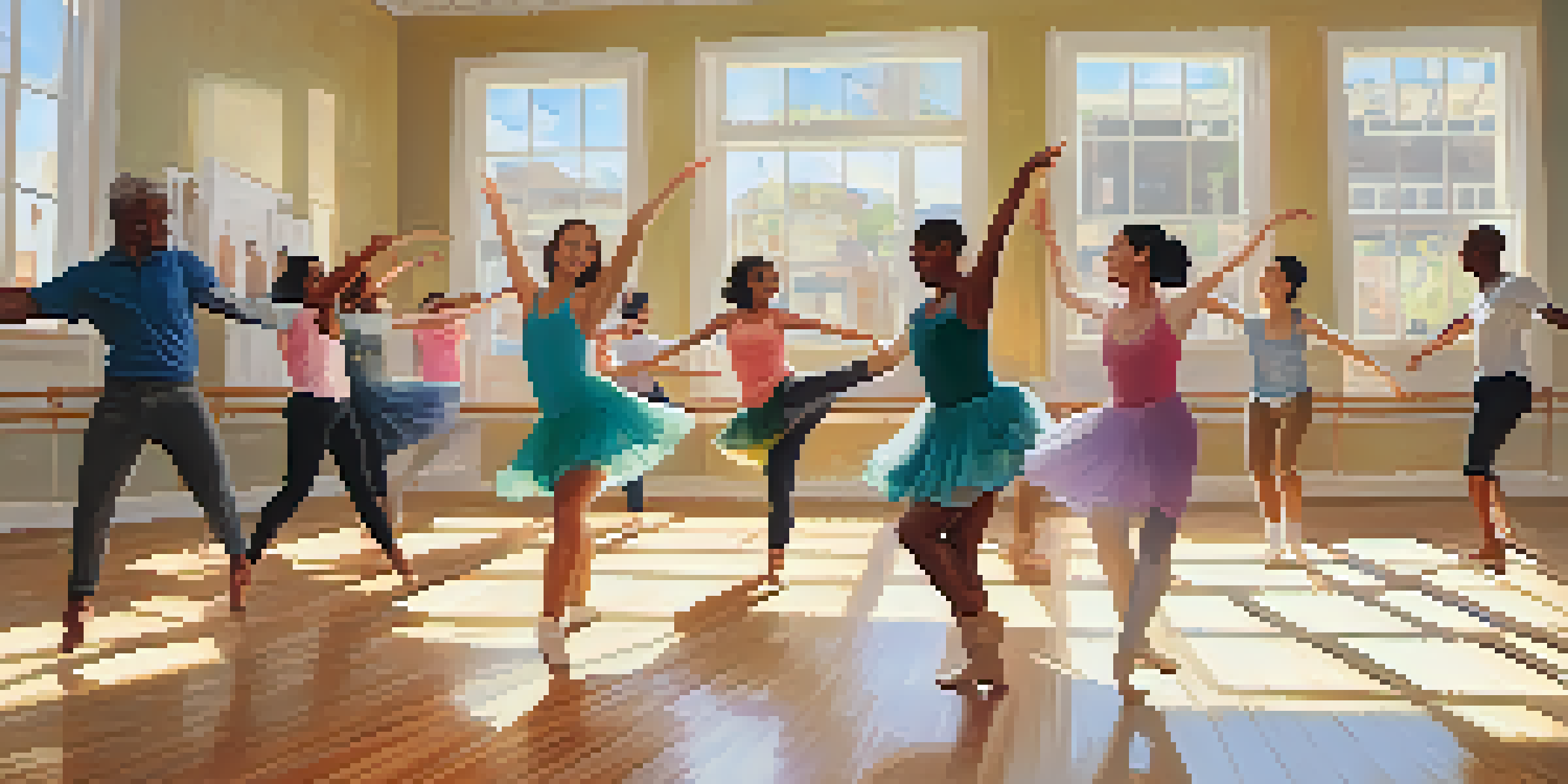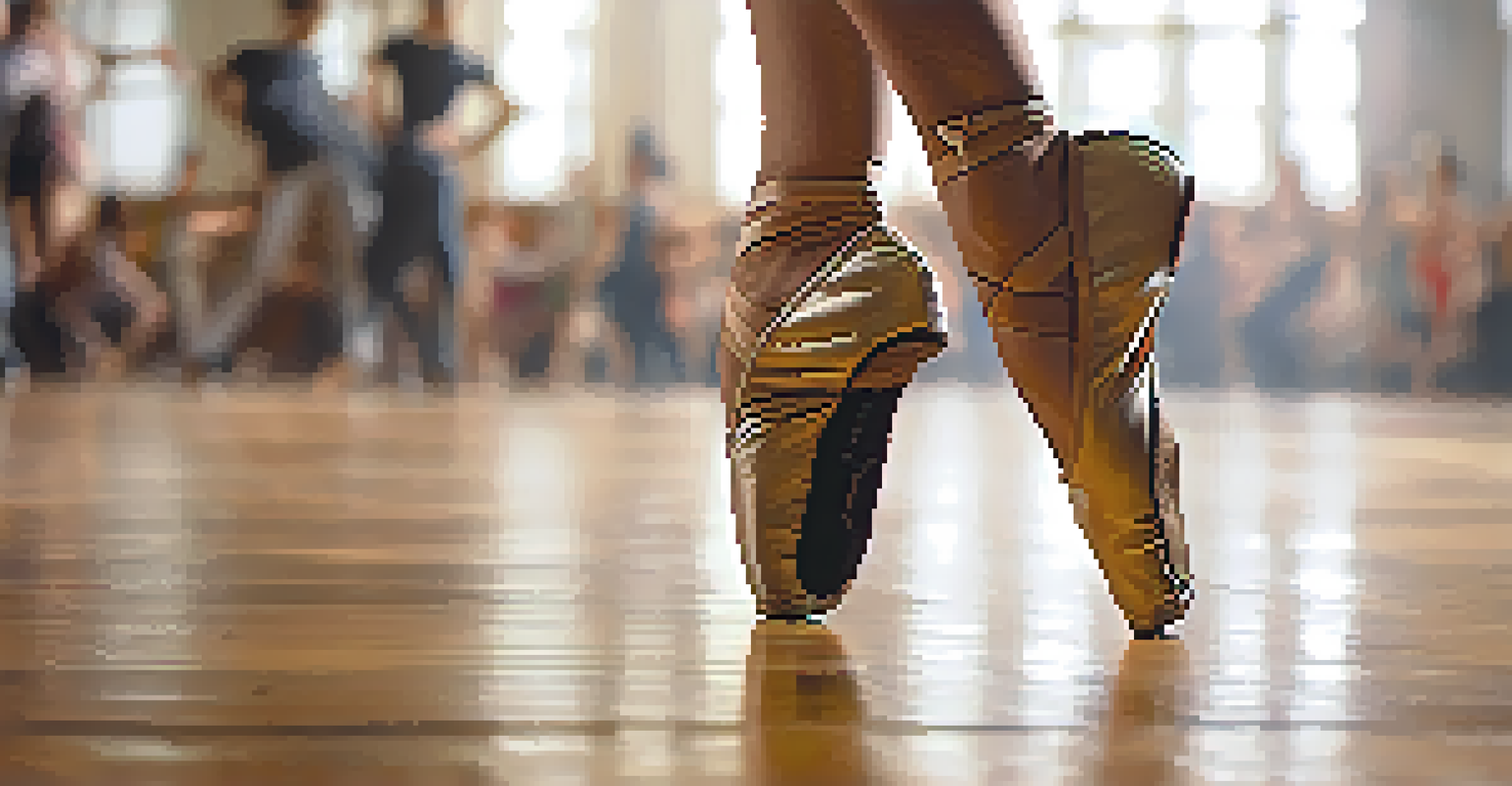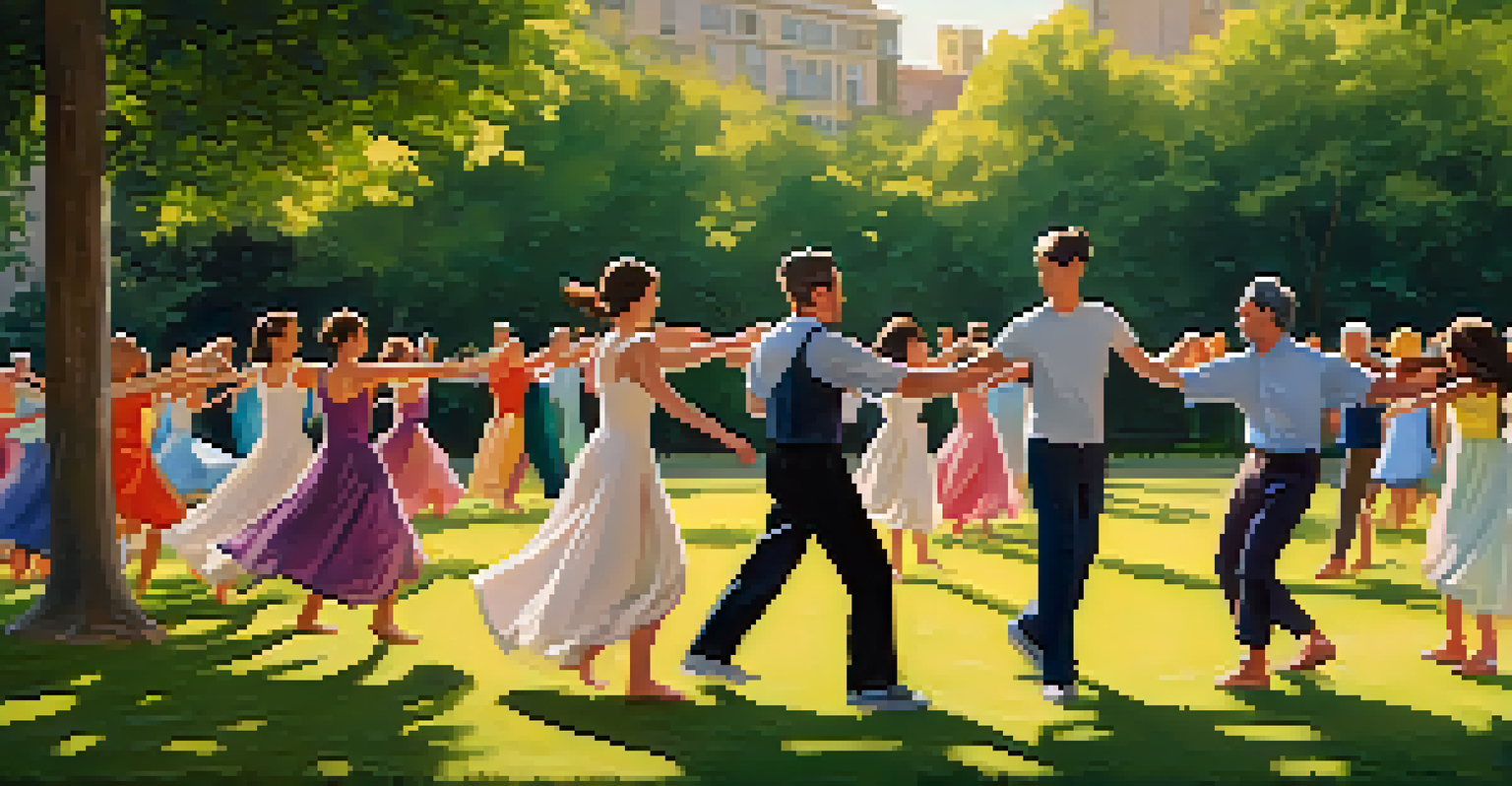Dance and Its Role in Rehabilitation: Moving Towards Recovery

Understanding Dance as a Therapeutic Tool
Dance has long been recognized not just as an art form, but also as a means of healing. Its rhythmic movements and expressive nature can play a crucial role in rehabilitation. When individuals engage in dance, they often experience a release of emotions and stress, which can be vital for recovery.
Dance is the hidden language of the soul.
In rehabilitation contexts, dance allows participants to connect with their bodies in a way that traditional therapies may not. It fosters a sense of freedom and joy, which can motivate patients to engage more fully in their recovery journey. Moreover, the social aspect of dance encourages interaction, reducing feelings of isolation often associated with rehabilitation.
Research has shown that dance therapy can improve physical mobility and mental well-being. By combining physical exercise with creative expression, dance helps patients regain strength and confidence. This holistic approach not only aids in physical recovery but also nurtures emotional healing.
The Science Behind Dance and Healing
The benefits of dance in rehabilitation are supported by various scientific studies. Engaging in dance can stimulate the brain, enhancing cognitive functions and emotional resilience. Neuroplasticity, the brain's ability to reorganize itself, is activated through dance, which can lead to improved motor skills and coordination.

Moreover, dance encourages the release of endorphins, the body's natural feel-good chemicals. This biochemical reaction can alleviate pain and improve mood, making the rehabilitation process more enjoyable. As patients experience these benefits, they are more likely to stay committed to their recovery plans.
Dance Enhances Healing Process
Engaging in dance promotes emotional release, physical mobility, and social interaction, making it a powerful therapeutic tool in rehabilitation.
Additionally, dance integrates physical, emotional, and social elements, creating a comprehensive healing experience. This multifaceted approach addresses not only the physical limitations caused by injuries or disabilities but also the emotional scars that can accompany them.
Types of Dance Used in Rehabilitation
Various styles of dance can be utilized in rehabilitation, each offering unique benefits. From ballet to hip-hop, each genre encourages different movements and emotions, allowing for tailored rehabilitation experiences. For instance, contemporary dance often emphasizes fluidity and expression, which can be particularly beneficial for those recovering from trauma.
The body says what words cannot.
Social dances, like salsa or ballroom, promote interaction and teamwork, helping to build social skills and confidence. These dance forms are especially useful for individuals who may feel isolated due to their circumstances. The community aspect of social dancing can create a supportive environment for recovery.
Additionally, therapeutic dance forms such as Dance Movement Therapy (DMT) focus specifically on the psychological aspects of healing. DMT encourages participants to express their feelings through movement, helping them process emotions and experiences related to their rehabilitation journey.
Case Studies: Success Stories in Dance Rehabilitation
Numerous success stories highlight the transformative power of dance in rehabilitation. For instance, a young stroke survivor found that participating in a dance program not only improved her mobility but also reignited her passion for life. The joy of movement helped her regain confidence and a sense of normalcy.
Another case involves veterans recovering from PTSD who found solace in group dance classes. Through shared experiences and expression, these individuals were able to bond and heal together, showcasing how dance can foster community and support during challenging times.
Diverse Dance Styles Aid Recovery
Different dance genres, from ballet to hip-hop, offer unique movements and emotional expressions that can be tailored to individual rehabilitation needs.
These stories emphasize that rehabilitation is not just about physical recovery; it’s about restoring joy and connection. Dance has the unique ability to bridge these gaps, proving that movement can indeed be a pathway to healing.
Creating a Dance-Based Rehabilitation Program
Establishing a dance-based rehabilitation program requires careful planning and consideration of participants' needs. It's essential to assess the physical and emotional capabilities of individuals to ensure the program is both safe and effective. Collaborating with healthcare professionals can help tailor the program to specific rehabilitation goals.
Incorporating a variety of dance styles and techniques can cater to diverse preferences and abilities. This flexibility not only keeps participants engaged but also allows them to explore different aspects of movement. Encouraging personal expression within a structured environment can enhance the overall experience.
Moreover, fostering a supportive community is key to the success of any rehabilitation program. Creating an inclusive atmosphere where participants feel valued and encouraged can significantly impact their motivation and commitment to recovery.
Challenges and Considerations in Dance Rehabilitation
While the benefits of dance in rehabilitation are clear, there are challenges to consider. Not all individuals may feel comfortable expressing themselves through dance, especially if they have experienced trauma. It's vital to approach each participant with sensitivity and allow them to engage at their own pace.
Additionally, accessibility can be an issue; not everyone has access to dance facilities or trained professionals. Implementing community-based programs that reach underserved populations can help bridge this gap, ensuring that the healing power of dance is available to all.
Future of Dance Therapy is Bright
As more rehabilitation centers adopt dance therapy, innovative approaches, including technology-driven methods, are emerging to enhance recovery experiences.
Finally, monitoring progress and adapting programs as needed is crucial for long-term success. Regular assessments can help facilitators understand how participants are responding to dance therapy and make necessary adjustments to enhance their experience.
The Future of Dance in Rehabilitation
As awareness of the benefits of dance therapy grows, the future looks promising. More rehabilitation centers are beginning to integrate dance into their programs, recognizing its unique advantages for healing. This trend is paving the way for innovative approaches that blend traditional rehabilitation methods with creative expression.
Advancements in technology, such as virtual reality dance programs, are also emerging, offering new ways for individuals to engage in movement therapy. These innovations can provide access to dance rehabilitation for those who may have mobility challenges or live in remote areas.

Ultimately, the future of dance in rehabilitation lies in its ability to adapt and evolve. By continuing to explore and embrace the power of dance, we can enhance recovery experiences and create more holistic, inclusive rehabilitation journeys.